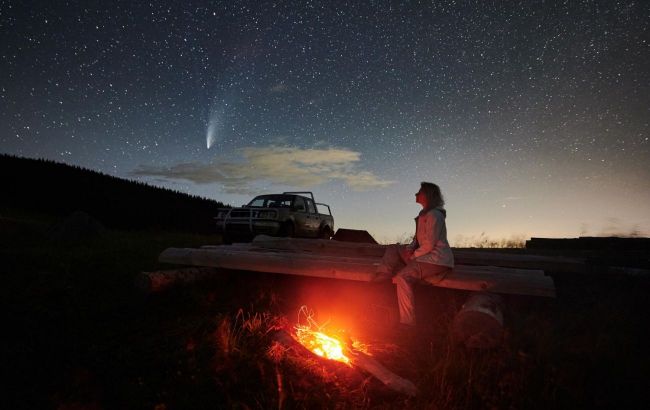Spectacular astronomical phenomena not to be missed in 2024: Dates
 What celestial phenomena can be observed this year (photo: Freepik)
What celestial phenomena can be observed this year (photo: Freepik)
Ukrainians will be able to enjoy several spectacular astronomical phenomena this year. Some of them will be visible even to the naked eye, states the Head of the laboratory of the Main Astronomical Observatory of the National Academy of Sciences of Ukraine Ivan Kriachko.
What astronomical phenomena can be observed from the territory of Ukraine
"I've prepared a short story about astronomical phenomena that can be observed in Ukraine without the help of optical devices, i.e. without binoculars and telescopes. All you need is a desire to observe and a clear sky," the scientist says.
There will be only one lunar eclipse in 2024 - it will be visible on September 18 and it will be partial. The maximum eclipse will occur at 5:45 pm Kyiv time.
The conjunction of the Moon with the planets will also be possible to observe without additional devices.
"This phenomenon is said to occur when the Moon and the planets lie next to each other in the celestial sphere, it is the apparent distance between the luminaries in the sky, not the physical distance," Kryachko clarifies.
The Moon's conjunctions with the planets:
- May 4 - the Moon and Saturn will be visible at 4.45 min*.
- May 5 - the Moon and Mars will be visible at 4.50 min
- June 3 - the Moon and Mars will be visible at 4.00 min
- July 7 - the Moon and Mercury will be visible at 21.45 min
- July 24 - the Moon and Saturn will be visible at 23.00
- July 25 - the Moon and Saturn will be visible at 4.00 a.m.
- August 21 - the Moon and Saturn will be visible at 5.00 a.m.
- October 14 - the Moon and Saturn will be visible at 22.00
- November 20 - the Moon and Mars will be visible at 22.30 min
- December 18 - the Moon and Mars will be visible at 7.00 a.m.
*daylight saving time
This year's supermoon will be visible on September 18 and October 17. For the observer, it is 14% larger in diameter and 30% brighter than the full Moon at its apogee.
Planetary conjunctions:
- April 11 - Mars and Saturn will be visible at 5:30 a.m.
- August 15 - Jupiter and Mars will be visible at 5.00 a.m.
Meteor showers
- August 12-13 - Perseids - the best time to observe is from 23.00 to dawn. You will also be able to see the Andromeda Nebula in the night sky
- October 8 - the Draconids - the best time to observe is from evening until dawn
- December 13-14 - the Geminids - the best time to observe is after 18.00 when the Moon sets (this night the Moon will be bright, so the best view of the stars will be in the morning)

